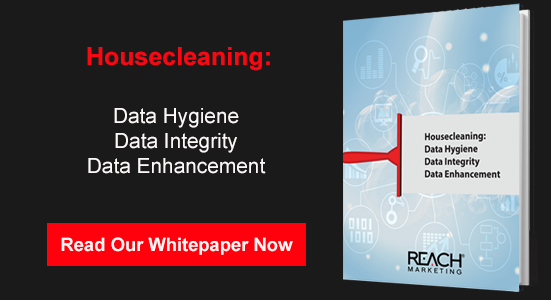One of big data’s greatest strengths is its ability to paint a clear picture of trends that wouldn’t be visible without the number-crunching power to reveal them. It helps transportation engineers map new roads, medical researchers track responses to new therapies, and marketing automation specialists make accurate projections of conversion rates on an email campaign.
Sometimes, it leads to startling discoveries on its own as users see patterns they never expected. One example is the recent discovery that not all positive customer feedback is good news. The Journal of Marketing Research recently published findings about a group researchers referred to as “harbingers of failure,” buyers whose interest actually predicted that a product would tank. These buyers were early adopters, but their tastes were sufficiently different from the mainstream that their approval didn’t have broader implications for the product’s success. Even more surprising, this correlation extended across numerous products throughout the group’s 7-year study of more than 130,000 customers.
The researchers also found another group that had the opposite effect – the “harbingers of success.” These early adopters were trend-setters and influencers whose initial support was a good predictor of success when the product went mainstream. It’s important to note here that researchers weren’t specifically measuring the positive effects of trendsetters’ visible approval via social media or referrals. These harbingers of success accurately predicted product successes even if they weren’t actively engaged in sharing their opinions.
The difference between the two groups wasn’t traceable to any particular demographic quirk or geographical location, nor did the effect disappear as researchers changed the parameters of success for products on store shelves. The difference lay in how closely these customers’ tastes aligned with popular tastes. In other words, the people who were devoted to purple ketchup or yogurt-enriched shampoo bought it first, but their interest was decidedly outside the mainstream.
How can marketing automation help companies recognize the harbingers of failure and court the predictors of success? The software’s ability to use big data to create accurate customer profiles based on history is an essential element in developing an ideal customer persona based on a composite of those profiles.
Aggregating data smooths the quirks and rough edges from it, revealing areas of greater overlap. Aiming for the sweet spot in the center of that area of overlap gives marketers an opportunity to court success from the outset.
Ideal customer personas are representative samples meant to mirror the tastes of an audience, but audiences aren’t all in need of the same products. That’s why marketers develop audience segments and direct their messages to these subsets of the total population of leads. Big data can help here too, making it easier for marketing research to show where the lines between segments should go. Each audience segment can then have its own ideal customer persona. A paper manufacturing company, for example, might have one persona to represent its academic clientele, another for its publishing clients, and a third for its corporate buyers.
Customers are individuals, and marketing automation systems honor their individuality with detailed records for each account. When looking for new customers, though, seeing leads through the lens of big data is a way to appeal to the harbingers of success while still leaving room for customers’ specific quirks and particular habits.
© Reach Marketing LLC 2015 All Rights Reserved.







